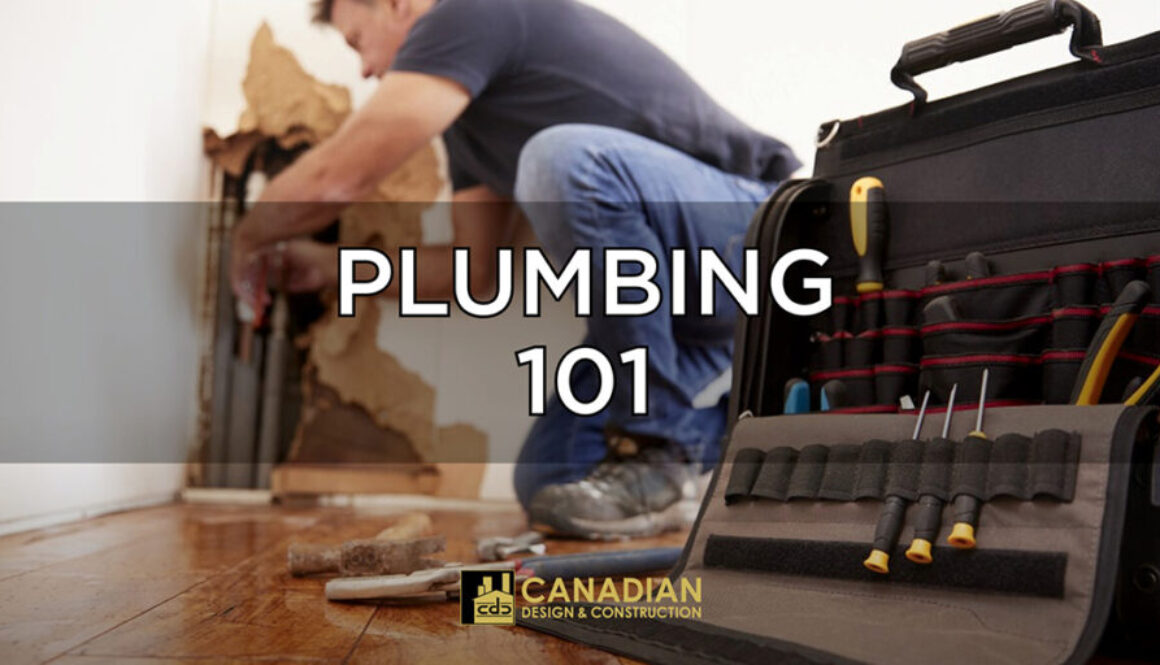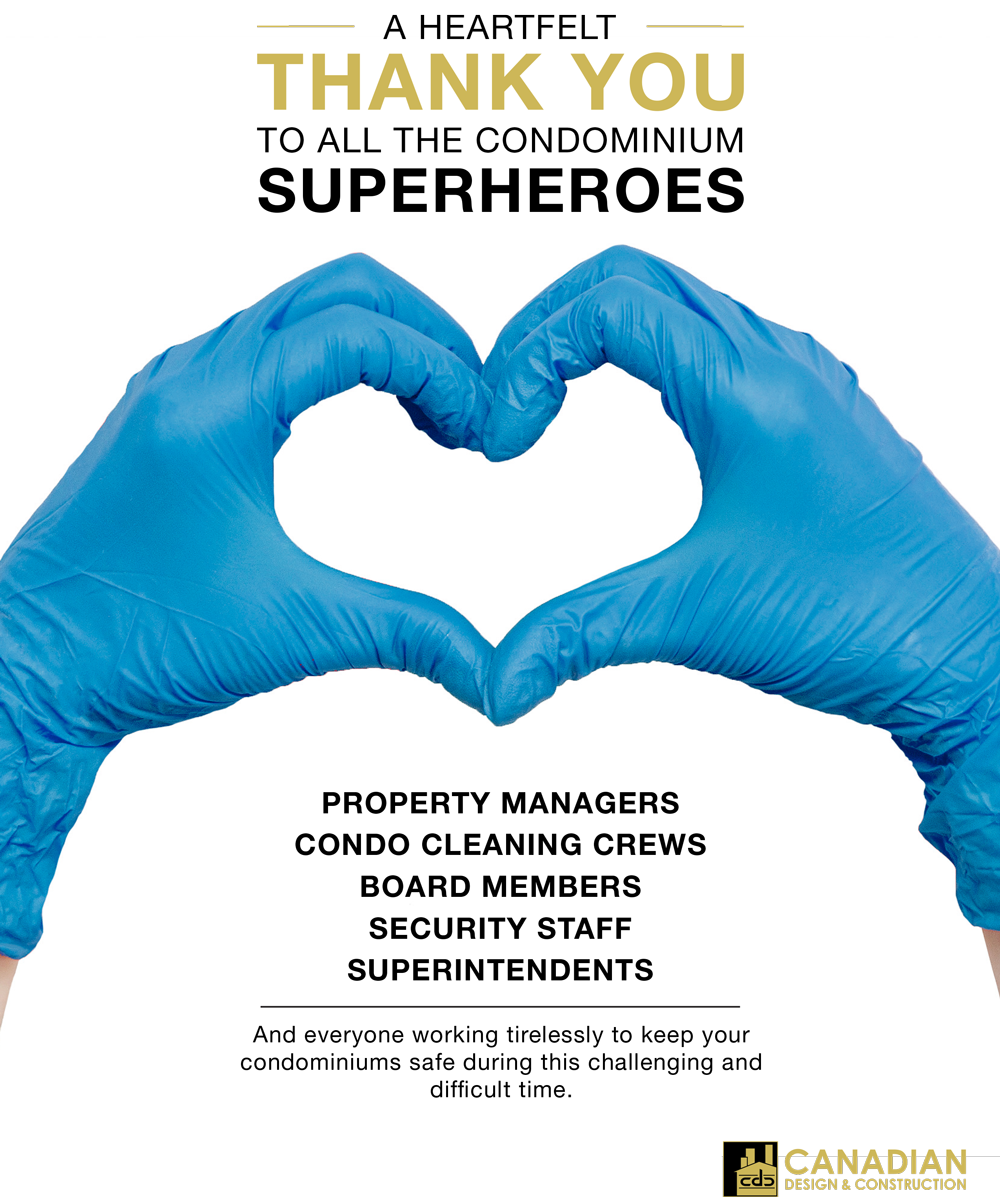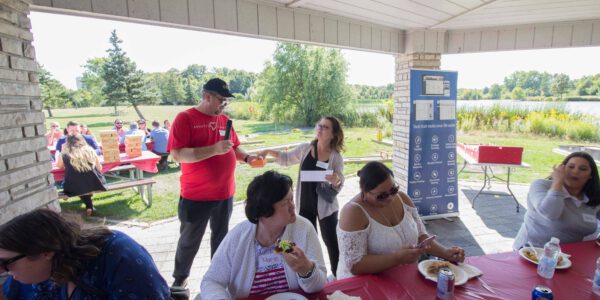
CDCPro


TIPS ON MANAGING YOUR PARKING GARAGE RESTORATION PROJECT IN THE WINTER
Completing a large parking garage restoration project always takes extensive planning to ensure it goes smoothly. But compared to other seasons, winter construction can bring additional difficulties. We’ve listed some of the common challenges below that property managers face when completing a winter parking garage restoration project.
DETECTING DAMAGE
Snow, salt and ice can make it difficult to notice damage on your parking garage’s ceilings, walls, ramps, columns and joists. But when you do, act fast! Large cracks, falling concrete or floor damage can negatively affect the structural stability of your building – and need to be dealt with immediately, regardless of the season.
PARKING CARS
It can be enough of a challenge to clear the snow and ice from your parking garage on a normal day in the winter. So how are you going to clear the entire parking garage for more than a few hours – possibly even days – when major restoration work is needed?
The good news is that you likely won’t have to. Reputable contractors are experienced with managing parking garage projects using techniques that only require half of the cars to be vacated from the garage at a time. This means that the (often limited) street parking can better accommodate your displaced residents – even during unexpected snowstorms.

PAINT-DRYING TIME
During the winter, garage dampness does not evaporate as quickly because of the cooler temperatures and lack of ventilation. These conditions create longer drying times for any painting project in your parking garage – including painting of walls, columns and ceilings.
Before paint can be applied, surfaces will need to be properly prepped with a power washer so that sand, salt and other debris are removed. While drying, the surfaces will need to stay protected from debris damage so that the paint can properly set (and look aesthetically appealing).
Specially formulated water-based paints for asphalt and concrete dry faster than solvent-based paints, making them more suitable for parking garages. However, freeze-resistance will likely need to be added so that the water-based paints don’t freeze.

REPUTABLE CONTRACTOR
Although spring and fall are the optimal times for completing parking garage restorations, serious issues that compromise the stability of the parking garage structure lead to winter work. To help mitigate the inconvenience that winter restoration projects bring to your residents and board members, a reputable contractor is needed.
Canadian Design and Construction has years of experience providing expert service to the condominium community. Our parking garage restoration projects are completed on-time and on budget while meeting our high-quality standards.
We are committed to ensuring your building remains in excellent shape for many years to come! Contact us today by emailing info@cdcpro.ca or by calling 905-712-1232.
By Sarah McKenzie

HOW TO WINTERIZE YOUR CONDO BUILDING
Once again, winter will soon be upon us here in the Greater Toronto Area. While we bask in the last few days of fall’s milder temperatures, it’s important to take some time to winterize your condominium building. Here are some tips to keep your condo residents comfortable and protected during the season ahead.
COMPLETE EXTERIOR MAINTENANCE
In order to keep the interior of your building dry and safe, you need to have a solid building exterior. If there is any damage or leaks on your building’s exterior including the roof, address those concerns first.
Use building sealant and caulking around your building’s doors and windows to maximize energy efficiency and reduce drafts.
And if you haven’t already done so, now’s the time to line up a vendor for snow and ice removal.
HAVE YOUR HVAC SYSTEM INSPECTED
Keeping your building’s HVAC system in good working order provides more benefits than just comfort: it saves on energy costs and reduces your condo building’s environmental footprint.
Hire a licensed contractor to conduct an inspection of the central or in-unit utilities and to complete any necessary repairs. Properly functioning fan coil units are more energy-efficient and also prevent your residents from breathing in potentially dangerous mould spores.
CHECK YOUR DRAINAGE SYSTEMS
Just like the gutters on homes, your condo building’s drainage systems need to be cleared out regularly. Rid them of leaves and other debris this fall to ready them for the wet season ahead. Otherwise, dangerous icicles, backups, and even leaks can occur. Spend time properly cleaning your parking garage’s floor drains and drain pipes. To prevent structural problems, salt-laden water from vehicles needs to be quickly drained away from the concrete surface. Always complete maintenance on clean-outs located on the slab’s underside, removable sediment buckets, and grates.
EDUCATE YOUR CONDO RESIDENTS
Keeping your building comfortable and as energy-efficient as possible isn’t a task just for condo Board members and property managers – your condo residents are also responsible.
Host an educational session with your condo residents to remind them of ways to reduce their energy costs this coming winter. Review tips, including proper fan coil and heat pump operation, how to eliminate drafts and proper emergency power failure preparation.
Even small changes can make a big difference in the overall comfort of a unit! Pre-programmed temperature settings on programmable thermostats can be easily adjusted to increase energy efficiency and save on electricity costs.
Without the proper preparations completed at your condo building, the upcoming winter season will seem that much longer. Let CDC help you prepare your parking garage, fan coil units and more for the cold temperatures ahead. Contact us today to learn more about our services!
By Sarah McKenzie

3 WAYS TO CONSERVE WATER IN YOUR CONDO BUILDING
Although avoiding cost increases keeps your building’s occupants happy (and makes your job easier), there are so many other reasons to keep your building’s water usage in check. From an increase in property values and a reduction in operating costs to countless environmental benefits, lowering your building’s water costs should be a priority. Here are three ways to start conserving water in your building starting today.
Complete Preventative Maintenance
When completing your next scheduled regular inspection of each unit, make water-based device maintenance a priority.
Flappers should be replaced yearly. When faulty, they can do one of three things: require multiple flushes, waste water with every flush or cause water to run constantly. Knowing whether a toilet is leaking can be tricky – but food colouring can help. If, after dropping food colouring into the tank, the dye appears in the bowl, the toilet is leaking. This could be caused by mineral buildup in the rubber parts or a faulty flapper.
To further conserve water, consider installing some affordable water fixture upgrades. Faucet aerators increase oxygen saturation and reduce water flow without causing a noticeable difference during water use. Installing inexpensive tank banks or float boosters can save ten or more gallons of water daily.
When a unit becomes vacated, complete a thorough inspection of its faucets, pipes and appliances to ensure they are in good working order. Leaks can only be stopped when they are detected. Consider installing a water monitoring service that alerts you about leaks and other waste issues.
Educate Your Tenants
Educational campaigns focusing on how unit owners can conserve water can make a huge impact on water bills and building operation costs.
Even small changes are beneficial when it comes to water conservation. For example, by encouraging unit owners to repair or report any small leaks in their units, hundreds of gallons of water can be saved yearly. A leaky shower can waste up to 10L of water a day. That’s a lot of money down the drain. A small leak in a shower can cost approximately an extra $20 per month. If even 20 units in your condo building have small shower leaks, that’s an extra $400 a month of unnecessary costs.
How to conserve water while showering, washing dishes and brushing teeth are only a few topics to include in your water conservation seminars.
Complete a Water Audit
Newer water-using fixtures and equipment are more energy-efficient, provide greater water conservation and reduce the cost of water. Although replacing your building’s water systems can be expensive, it can often save money in the long run.
A water audit provides you with information regarding where water’s being used and how much is being used at each location. This expert analysis highlights areas where water savings is possible and will provide you with retrofit options for your building.
CDC Can Help
Want more help with implementing water savings in your building? Contact CDC’s Plumbing and Mechanical Division to schedule a water conservation audit today at 905-615-1111. Or visit www.cdcpro.ca to learn more information.
By Sarah McKenzie

CDC AT THE CONDO CONFERENCE 2019 AT THE ENERCARE CENTRE

ASSOCIA CARES WILSON BLANCHARD PROPERTY MANAGEMENT’S SUMMER BBQ
CDC had the pleasure of sponsoring Associa Cares Wilson Blanchard Property Management’s summer BBQ at Centennial Park on Sept. 19th. It was an afternoon of fun games, good food and meeting a lot of new friends. We had a wonderful time and thank you to Wilson Blanchard Management Inc for the wonderful opportunity. Our friends from RJC Engineering, Brand M3dia Group and Folio Interior Design Group also joined us for the day. Here are some pics from the event.

PLUMBING 101: GLOSSARY OF TERMS
As a Property Manager, there is little more stressful than a plumbing emergency in your condo building. When you’re faced with this kind of situation, it’s helpful to have knowledge of the problem at hand. Our handy glossary of plumbing terms will have you speaking our language.
-A-
Adaptor: Used in piping systems to connect straight sections of pipe or tube or dissimilar piping methods (ie. sweat copper to threaded fittings). Also used to regulate or measure fluid flow.
Annealing: A process that uses an oxygen-acetylene torch to heat a material to a certain temperature before cooling off. Used to reduce a material’s hardness and increase its pliability. Applied to copper in plumbing applications.
-B-
Back-flow: A process when cross-connections enable unwanted water to flow in the opposite direction, usually through siphoning. This can lead to potential health risks if potable water becomes contaminated with foul water.
Back-flow Prevention: Devices implemented by building owners to prevent backflow; often mandated in building codes.
-C-
Cleanout: A convenient place in a building’s drainage lines that can be accessed by drain clearing equipment if there’s a backup. Covered with an aesthetically pleasing cleanout cover.
Coupling: A short piece of pipe or tube used to connect two pipes or tubes together. Also known as a coupler.
-D-
Drain Cleaning: A service that uses heat-generating chemicals to unblock clogged sewer pipes or wastewater drains. Also known as stack cleaning.
Drain Tile System: A pipe system comprised of perforations in corrugated plastic, PVC or clay tile that directs subsoil drainage to a sewer or water retention area. It helps control water and prevent wet basements.
-E-
Escutcheon: A decorative plate used to seal the wall opening around a faucet handle. Covers the faucet stem in sink faucets and mixing valve in showers.
Epoxy Pipe Lining: An epoxy resin lining used inside older pipes to seal off pinholes and corrosion. A more economical option used to replace an old piping system rather than install a new system.
-F-
Faucet: A water flow controlling device commonly used in kitchens and washrooms. Also known as a “tap” or “spigot”.
Flux (Plumbing): A type of paste used in plumbing to remove oxides and other coatings when joining copper or brass pipe and fittings during a process known as “sweating.”
-G-
Gate Valve: A device that’s regularly operated by a wheel handle to control liquid flow within a pipe. Commonly used when minimum pressure loss and a free bore is required. Not intended to throttle or regulate water flow.
Gray Water: Wastewater generated from non-fecal contaminated streams including sinks, showers and washing machines. Unsafe to drink but can be treated and reused onsite for landscaping, washing or toilet flushing. Reduces the demand for public water supply.
-H-
Hard Water: A freshwater supply that contains a high mineral content (predominately calcium and magnesium). Indicated by spotting on dishware, scale build-up on showerheads and rings around the bathtub. It does not pose a health hazard but can shorten the lifetime of fixtures and appliances and alter the effectiveness of cleaners. It can be corrected with an ion-exchange based water softener.
Hydraulic Pressure: The force produced when liquid is forced against an object; caused by liquid’s existing property called compressibility. Hydraulic fluid appears milky and certain elements in the hydraulic system become unstable.
-I-
Instantaneous Water Heater: A type of water heater that uses a heat exchanger coil to heat water. “Point of use water heaters” service-specific plumbing fixtures and “tankless water heaters” normally serve multiple locations in a building due to their high capacity heater.
Isolation Valves: A type of valve on a potable water system used to stop water supply in a specific location for maintenance or safety reasons. Avoids causing disruption to the entire building’s water supply.
-J-
J-Hooks: A type of hook that resembles the letter “J constructed of plastic, steel or copper that’s typically used in plumbing to hang waster, vent and water piping. Available in different sizes and used vertically or horizontally to secure pipes at different grades.
-K-
Kitec Plumbing: A brand of plumbing pipe commonly used for water supply lines and radiant hot water heating in homes and condos built between 1995 and 2007.
Kitchen Sink Faucet with a Pull-Out Spray: A type of faucet for kitchen sinks that features a spray mechanism that extends from the spout. Either a hard spray or aerated flow occurs when a button is depressed on the spray head.
-L-
Liquid Waste: Liquid released from a plumbing fixture into a sewage system or septic tank that is not contaminated with human or animal waste. Can include wastewater, fats, oils or hazardous household liquids.
Lead: A natural, soft, heavy metal that is known for its durability and malleability. Commonly used until the 1980s in faucets, flush valves, hose bibbs, etc. until its ability to leach poison into the water supply was realized.
-M-
Main Line: A dominant water line that provides water from the meter at the street up to the area where it enters the building. Additional supply lines in the building extend from this line.
Manifold: A plumbing system’s control hub that distributes hot and cold water to PEX distribution lines throughout a building.
Mixing Valve Maintenance: Preventative work completed on a thermostatic mixing valve (TMV) to ensure scalding in hot water temperatures do not happen. It also delivers a consistent water temperature, providing user comfort.
-N-
Nipple: A short section of threaded pipe that’s used to connect two couplings or fittings.
No Hub Soil Pipe: A type of cast iron pipe that lacks a hub or socket, joined with no hub couplings.
-O-
Oakum: Tarred fibre used to seal gaps and joints in cast iron plumbing pipes.
Open Site Drain: A type of drainage piping that connects a plumbing fixture or appliance into an isolated waste pipe or container. Other than featuring an overflow rim that ends above the floor, similar to floor drains.
-P-
PEX Plastic Water Piping and Fittings: A type of polyethylene (PEX) with cross-links used in domestic water piping. Kitec is a popular manufacturer.
Pinhole Leaks: Tiny leaks due to corrosion caused by the accumulation of steel particles inside copper hot water pipes.
-R-
Re-piping/Retrofitting: A process used to upgrade domestic waterlines to create better water efficiency. It could involve a complete replacement or adaptations to plumbing fixtures. Toilets, showerheads, and faucets are typically targeted.
Risk Assessment Program: A formal process used to identify, evaluate and control hazards associated with a building’s water systems. Implemented to recognize and prevent potentially life-threatening water contamination risks such as bacteria and chemical corrosion.
Riser: A vertical supply line made of metal or plastic that joins a faucet or shower fixture to a water supply stop valve. A term also used to describe a water supply line in tall buildings where excessive water pressure is needed.
-S-
Sewage: The combination of excrement collected from a condo building and wastewater from stormwater and ground surface. Transported in sewers.
Stack: A vertical pipe that connects fixtures and waste lines. The top of each stack is vented with a stack pipe (or “stink pipe”).
Sump Pump: A type of pump used to remove water from a low-lying, dug sump pit and transport it away from the property. Used in areas prone to flooding, typically basements and crawl spaces.
-T-
Thermostatic Mixing Valve (TMV): A pressure-balancing shower mixing valve that safely combines hot water with cold water in showers and baths. Typically uses a wax thermostat to regulate temperature and automatically turn off when necessary to prevent scalding or thermal shock.
Trap: A curved-shaped device in plumbing drains and sewers that prevents toxic sewer gases from re-entering the building. When a plumbing fixture is used, leftover water is retained in the trap that creates an air seal. Every plumbing fixture must have either an internal or external trap.
-U-
Union: A three-piece fitting designed to join two pipes that allows them to be disconnected without causing any pipe damage. Normally used with a steel pipe.
-V-
Vent: A vertical pipe that regulates a plumbing system’s air pressure. Removes gas and odours while allowing air into the drain system. Also known as a plumbing air vent or vent stack.
Velocity: A calculation of how fast water moves through piping measured in feet per second.
-W-
Water Hammer: A loud, obtrusive sound from plumbing pipes created when the water is suddenly turned on or off. A serious issue that can lead to pipe collapse, but can be cured with a water hammer arrestor. Also known as hydraulic shock.
Water Conservation Audit: A comprehensive, on-site survey conducted by a trained water conservation auditor that provides an analysis of current water usage and water conservation measures. It can lead to better energy efficiency, environmental sustainability, and energy savings.
CDC understands the unique needs of the condominium environment, and this knowledge helps us to provide excellent service to the condo sector. Whether it’s for a Kitec Plumbing Replacement or to fix a leaky pipe, call our experts today at 905-615-1111 to address your round-the-clock plumbing needs. Or, visit our website.
By Sarah McKenzie

HUMBER BAY SHORES 13TH ANNUAL GOLF TOURNAMENT
This was CDC’s first time participating in the Humber Bay Shores 13th Annual Golf Tournament at Markland Woods Golf Club. Not only did some of our CDC team members enjoy the game, but we also had an exhibit set up at one of the holes. It was wonderful getting to know members of the Humber Bay Shores community and sharing our knowledge of the condo industry with them. Thanks to HBSCA for having us and to Peter VanSickle from Folio Interior Design Group for being our guest that day. It was truly a memorable experience and we look forward to future networking opportunities.
We’d like to share our photo gallery of the day’s events with you. Please click on the link below.
Kind regards,
Team CDC

THE NUTS AND BOLTS OF A CCDC DOCUMENT
From roof repairs and parking garage restorations to lobby remodelling and HVAC installations, condominium construction projects always accompany a certain level of risk.
In no time at all, construction projects can get complicated, too. What duties and obligations are the owner, contractor, and subcontractor responsible for? What happens if a party fails to abide by their obligations? How will risks be shared or divided during the project? Documents and contracts endorsed by the Canadian Construction Documents Committee (CCDC) can help keep responsibilities organized. Here’s what you should know about CCDC documents and why you should be using them for your next construction project.
What is CCDC?
Since 1974, the CCDC has acted as a national joint committee that develops, creates and reviews shared construction contracts, forms and guidelines.
The CCDC documents are developed through a consultative process involving representatives from all construction industry divisions. The Association of Consulting Engineers Companies – Canada (ACEC), Canadian Construction Association (CCA), Construction Specifications Canada (CSC) and Royal Architectural Institute of Canada (Architecture Canada) are also involved with endorsing all CCDC documents. A Canadian Bar Association lawyer acts as an ex-officio committee member.
After reaching a consensus by these parties, the CCDC documents are endorsed.
Who Uses CCDC Documents?
The CCDC’s series of standard construction contracts can be used for construction projects countrywide. There are a total of 13 contract forms endorsed by CCDC, with seven of them administering the relations between owners and prime contractors. They can be divided into three categories:
General Contract – The owner assigns the prime contractor (who can sub-contract directly to any trade contractors) with the overall job duties. Certain CCDC contracts outline how the prime contractor is compensated. For example, CCDC 4, Unit Price Contract, remunerates the prime contractor on the basis of a pre-established fixed amount for each unit of work completed.
Design-build – Under CCDC 14, Design-Build Stipulated Price Contract, the owner delegates the prime contractor with overall job duties plus its design. If needed, the contractor has the ability to engage consultants to complete the required design services using CCDC 15, Design Services Contract between Design-Builder and Consultant. CCA 1, Stipulated Price Subcontract, can be used to sub-contract work out to trade contractors.
Construction Management – When an owner uses a construction manager to provide advisory, administration, and oversight services, CCDA 5A, Construction Management Contract for Services and CCDA 5B, Construction Management Contract for Services and Construction, are used to subcontract work to trade contractors.
What are the Benefits of CCDC Documents?
As Canada’s only source for recognized Canadian standard construction industry documents, CCDC’s standardized construction documents can help make your next construction project go smoothly. Build trust, simplify bidding and contracting, fairly allocate risk and feel confident using these established legal precedents. Let Canadian Design and Construction help you organize your CCDC documents during your next condominium renovation project! Contact us today to learn more about our building services.
By Sarah McKenzie

CONDO BALCONIES: WHO IS RESPONSIBLE FOR THE UPKEEP?
Spring is finally here.
Along with spring’s arrival comes the opportunity to spend more time outdoors – without the risk of catching a cold.
Condominium balconies provide the perfect opportunity for many Toronto residents to get outside. But after the harsh winter that we just experienced, are you wondering if your balcony requires any maintenance work? And if it does, do your condo’s residents know who is responsible for paying for the maintenance and repairs?
We’ve got the facts for you below when it comes to your condo balcony and required restoration work. As property managers, you can pass this information along to your condo’s residents/Board members.
Your Condo’s Balcony: An Exclusive-Use Common Element
From corridors and garages to the roof and heating and air conditioning systems, it’s normally easy to determine the common elements within a condo building.
Things start to get more complicated when you considering condominium balconies.
As an area where only the unit owners or neighbouring unit owners have access, a balcony is known as an exclusive-use common element. Parking spaces and marina slips also fall into this category.
In Ontario, there is no standardization when it comes to exclusive-use common elements. So sometimes, balconies can be classified as freehold, too. Check the declaration of your unit to see how your balcony is classified.
Determining Who is Responsible for Condo Balcony Maintenance and Repairs
Under most circumstances, a condo unit owner is responsible for the maintenance of any exclusive-use common element.
When repairs or replacements are necessary, the condo Board is normally responsible.
Any exceptions would be outlined in your unit declaration paperwork.
Unit Owners Can Be Responsible for Balcony Repairs and Replacement, Too
Like most things in life, there are exceptions when it comes to condo balcony repairs or replacement, too.
Although the reserve fund can typically be used for condo restoration work, each owner may be responsible. For example, if the unit owner has not completed proper maintenance on their balcony or allowed the corporation to do so and damage occurs, the owner may be responsible for the costs.
The same logic applies when a unit owner, guest or tenant has caused damage to an exclusive-use common element and repairs are necessitated.
The Repairs Required by Concrete Balconies
There eventually comes a time when your concrete balcony surface will need to be repaired or resurfaced due to extensive damage. Normally if one balcony requires restoration work, all of the balconies in the building will as well.
Diamond-tipped grinders can make balconies damaged by weather, pitting or poor finishes look new again. If there’s a water infiltration issue, a solution can normally be found by re-sloping the balcony surface to eliminate any water pooling. When it comes to balcony restorations, Canadian Design and Construction knows how to best restore or reconstruct balconies. As part of our building envelope restoration services, we work quickly and safely to restore balconies to their optimal condition. Contact us today for more details.
By Sarah McKenzie













































